Tampere University researchers have developed a wearable highly unobtrusive low-cost e-tatoo enabling measurements of arterial pulse waves based on peizoelectric technology. This technology will be presented at the TechBlick conference on wearable sensors, e-textiles and printed electronics on 2 DEC 2022. This is a free-to-attend event online where you can network with 400+ attendees and visit 40+ booths. If interested please see agenda and register here www.TechBlick.com/wearables
Slide 1: Cardiovascular diseases (CVDs) are the most common cause of death in the world accounting for approximately 30 % (~17.9 million) of all deaths in 2016. Extrapolating from this, the size of the risk group in danger of developing potentially lethal CVDs is counted in hundreds of millions worldwide (US alone was estimated to have 82.6 million people with CVD in a 2010 study). Continuous arterial pulse wave (pw) monitoring has been recently suggested to monitor this immense risk group. However, at the moment there exists no solution that would combine the cost-effective fabrication, unobtrusiveness and accuracy of these devices.
Slide 2: In our study, we developed a scalable and cost-effective printing-based fabrication method for an electronic tattoo (e-tattoo) type pw-sensor and investigated its accuracy in-depth using a reference device and multiple study subjects. The device is based on bar coated P(VDF-TrFE) piezoelectric layer sandwiched between inkjet-printed GOPS cross-linked PEDOT:PSS bottom/top electrode. The chosen materials are biocompatible, transparent and the overall thickness of the device (including the Parylene C substrate) is only ~4.2 µm which makes the device highly unobtrusive for the user. The thin form factor also enables the access to high bending mode sensitivity of the P(VDF-TrFE) during pw measurement. The use of piezoelectric transduction principle furthermore improves the energy efficiency of the device which is especially important in energy scarce on-skin application.
Slide 3: The ferro-/piezoelectric performance of the ultra-thin P(VDF-TrFE) layer was optimized using GOPS cross-linked PEDOT:PSS. Compared to pristine PEDOT:PSS the remanent polarization value was increased by ~70% and coercive field decreased by ~34 percent. The probable cause for this improvement is the reduced leakage current when using cross-linked PEDOT:PSS electrodes which improves the efficiency of the poling step. The reduced leakage current is likely related to the improved chemical stability of the cross-linked PEDOT:PSS which prevents the electrode material leaching into the P(VDF-TrFE) layer. Initial leakage current analysis shows that the Poole-Frenkle type conduction (which is related to P(VD-TrFE) internal trap states) is absent for samples with cross-linked PEDOT:PSS electrodes.
Slide 4: The ultra-thin form factor of the device enables us to access the high bending mode sensitivity of the P(VDF-TrFE) in pw measurement. To this end, the sensor was characterized in uniaxial bending on PET and multiaxial bending on various Youngs moduli soft elastomers (PDMS); the former characterization setup corresponds the situation where the e-tattoo sensor deforms freely with the skin on top of the artery without cuff while the latter setup corresponds to cuffed pw measurement. In both cases the maximum measured sensitivity was 1700 pC/N which is approx. 50 times higher than the normal mode sensitivity of P(VDF-TrFE) which is effective in the traditional applanation tonometry (sensor attached on rigid back plate and pressed against artery). FE-model was generated to verify the results.
Slide 6. Cuffless and soft-elastomer cuffed pulse wave measurements were performed using the e-tattoo sensor. Comparison to reference device with n=7 test subjects shows that best match in pulse waveform derived clinically relevant radial augmentation index is achieved with soft elastomer cuff with intermediate Young’s modulus (1:10 PDMS) (p≈0.22 with all the test subjects, p≈0.81 with 5 measurements with no problems). Cuffless measurement is also possible with the e-tattoo sensor even though the experiment-to-experiment variation is significant due to challenges with the mechanical coupling of the sensor and sensor-to-sensor output impedance variations. Still, in the best cases, the cuffless measurement results in a very good match between the sensor and the reference device.
This technology will be presented at the TechBlick conference on wearable sensors, e-textiles and printed electronics on 2 DEC 2022. This is a free-to-attend event online where you can network with 400+ attendees and visit 40+ booths. If interested please see agenda and register here www.TechBlick.com/wearables



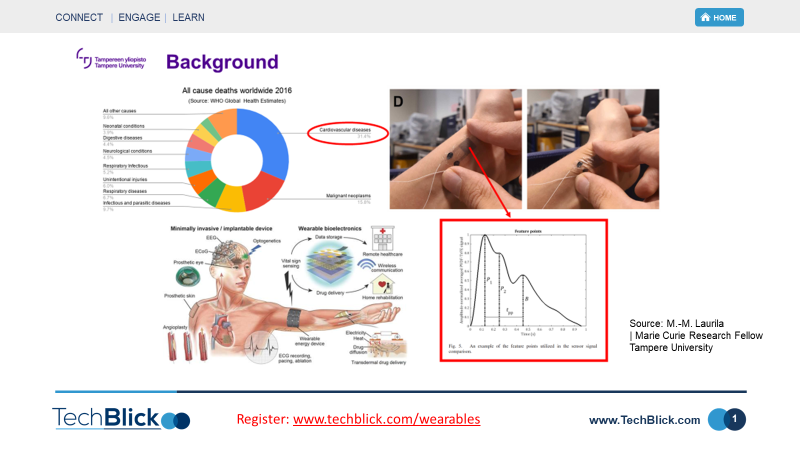

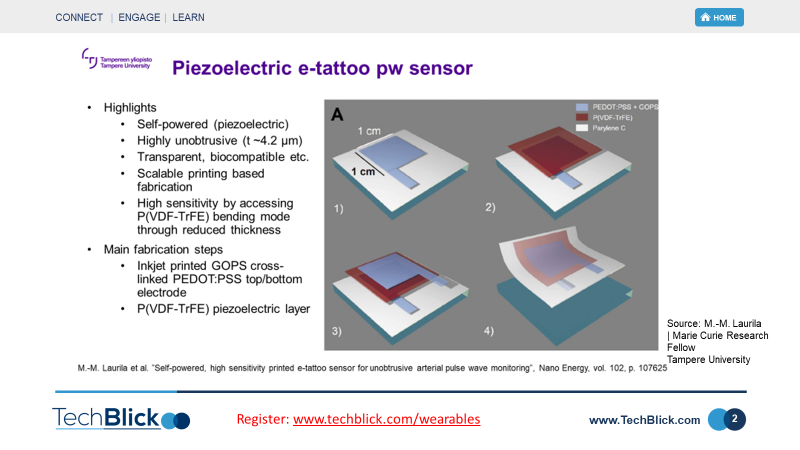

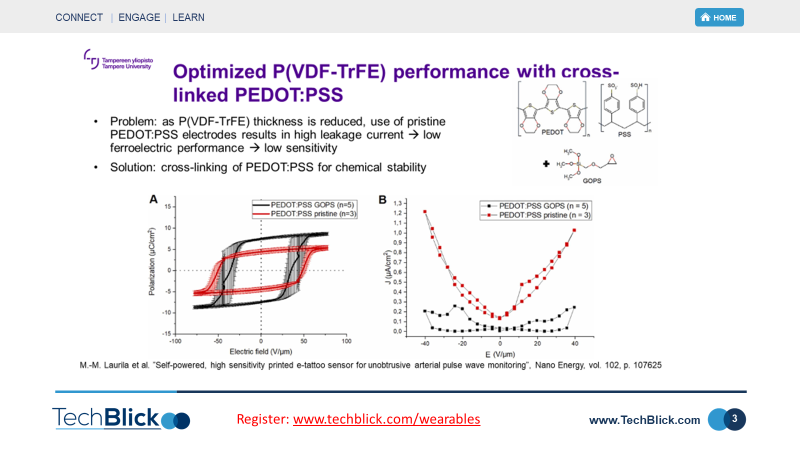

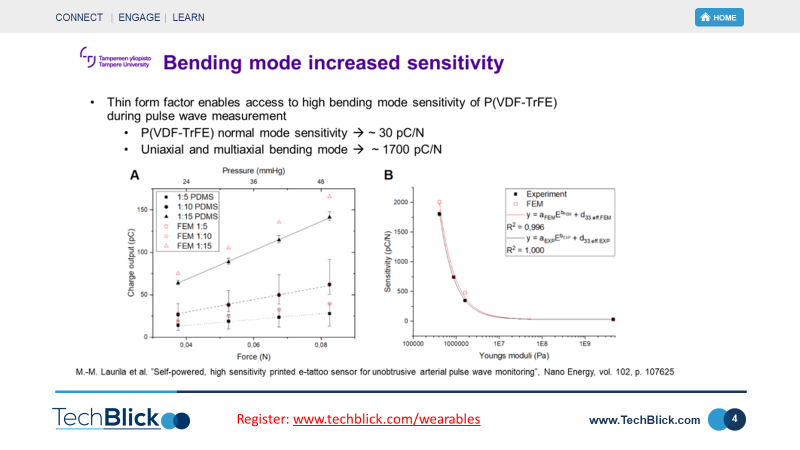

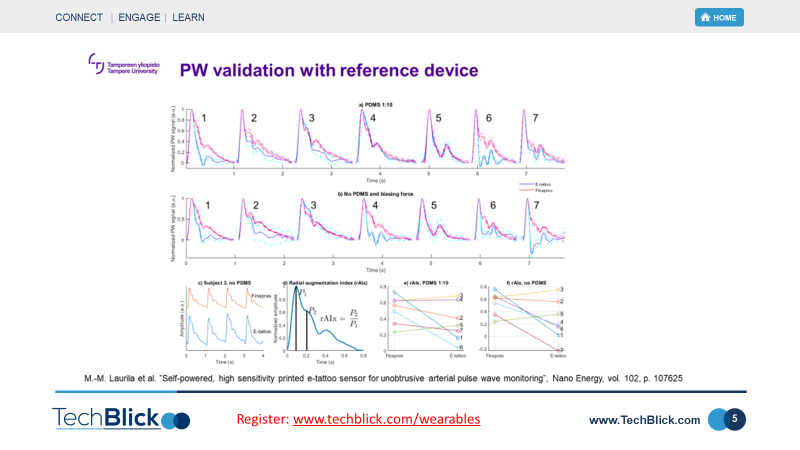

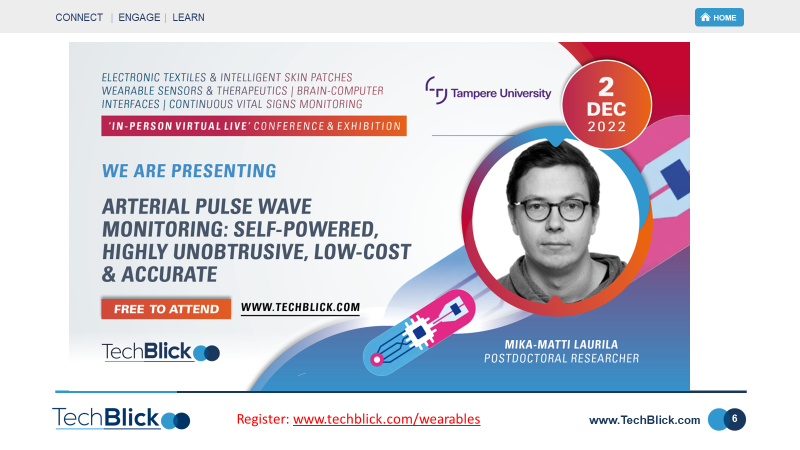
Comments